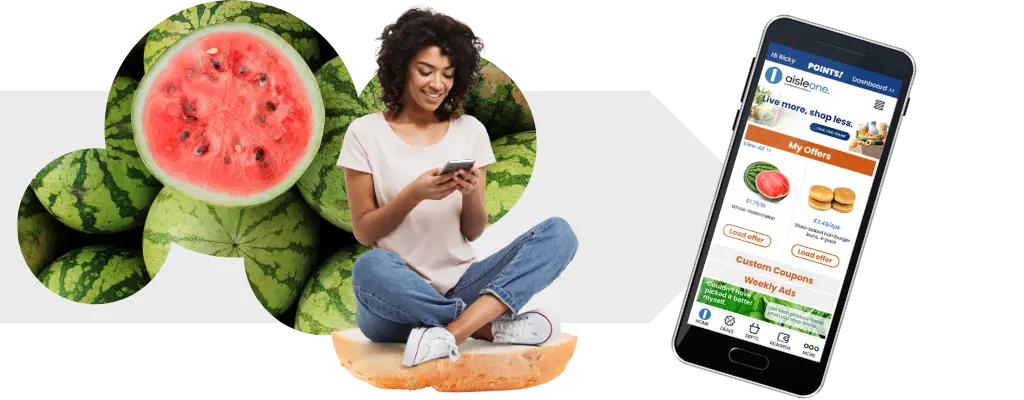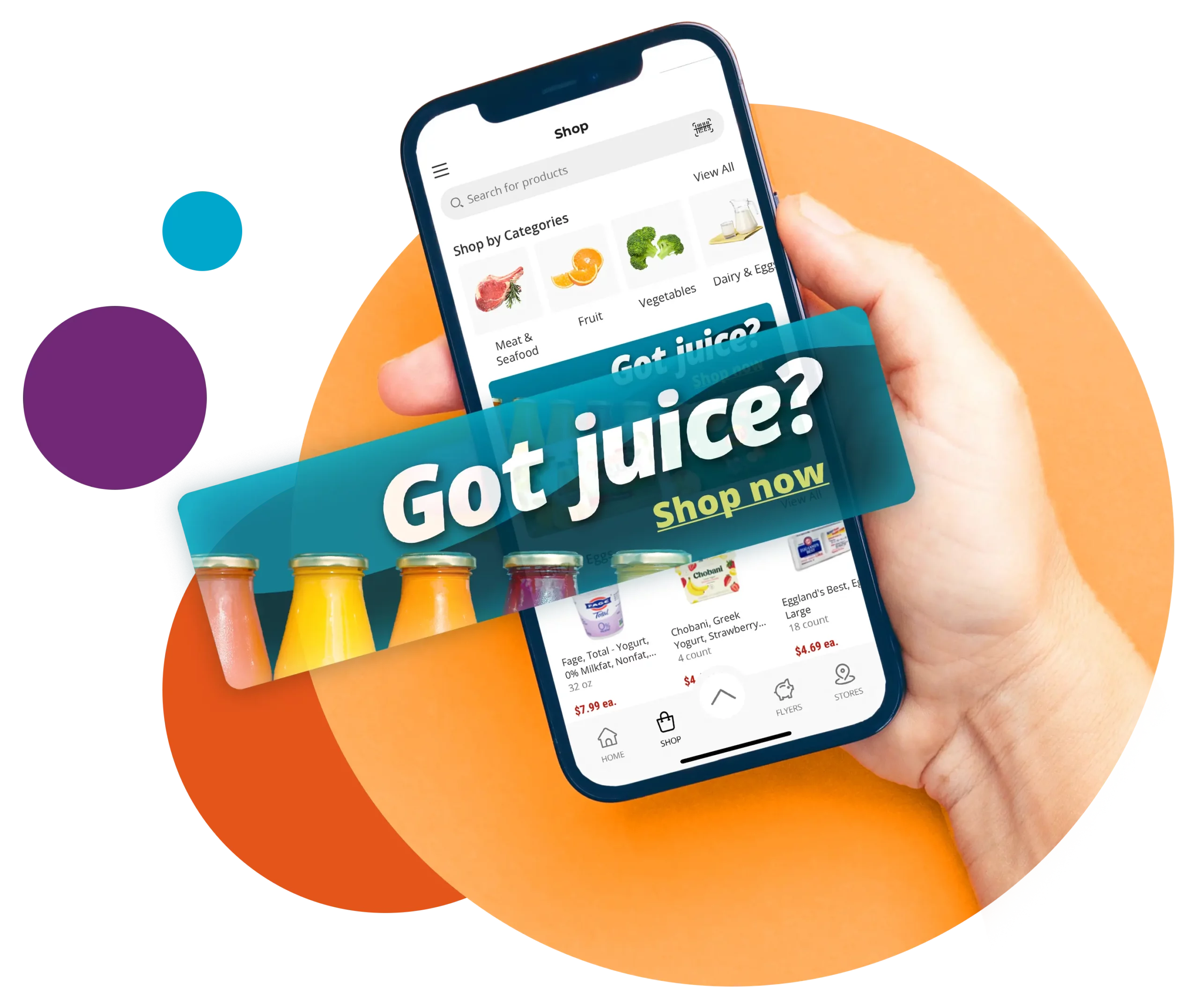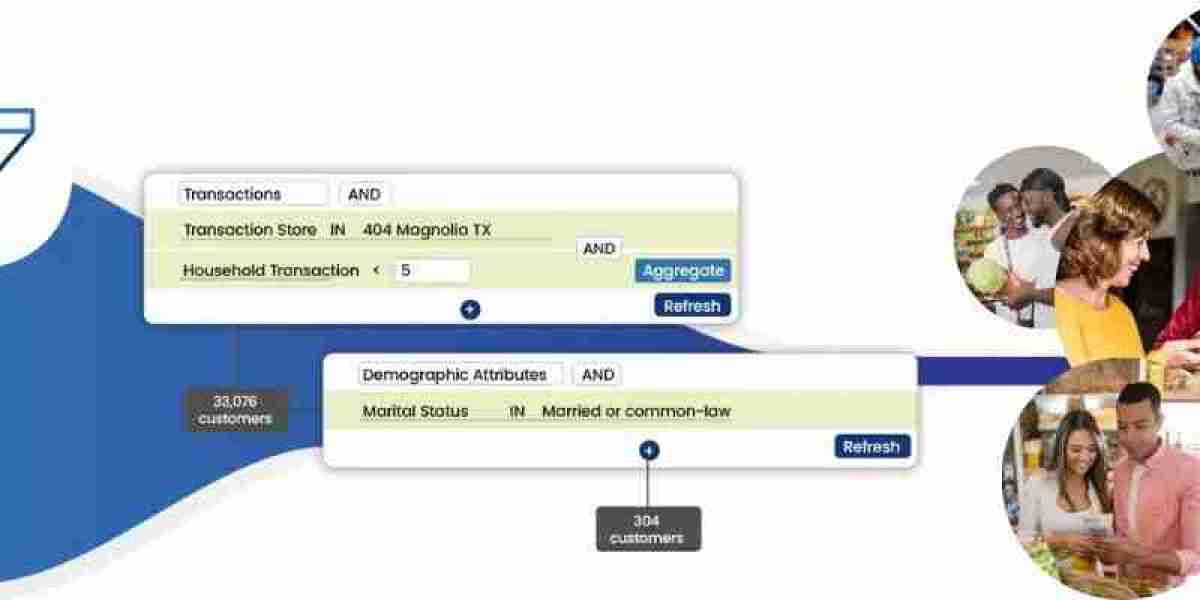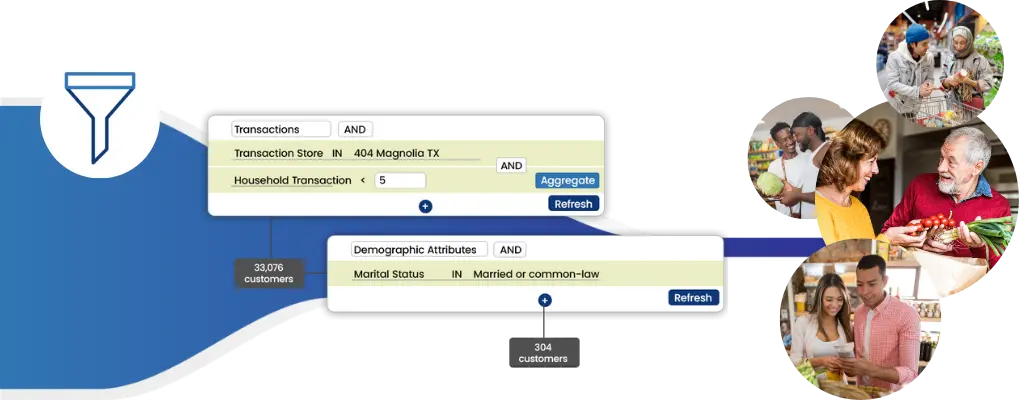Introduction
In the fiercely competitive retail sector, grocery loyalty programs stand out as essential tools for supermarkets and grocery retailers aiming to enhance customer loyalty and drive repeat business. These programs are not just perks for shoppers. As consumer preferences shift towards more personalized shopping experiences, the importance of effective grocery loyalty programs has become more pronounced than ever. By offering tailored rewards and benefits, these programs play a crucial role in aligning store offerings with customer expectations, thereby boosting satisfaction and loyalty.
The strategic implementation of grocery loyalty programs is increasingly influenced by the integration of advanced data analytics and digital technology, which allows for deeper insights into consumer behavior. Retailers can leverage these insights to offer more personalized and relevant promotions, which not only enhance the shopping experience but also increase the efficacy of marketing efforts. These loyalty programs are crucial for grocery stores to differentiate themselves from competitors. They enable businesses to build a strong foundation of trust and loyalty, converting one-time shoppers into lifelong customers. As we explore the mechanics and benefits of these programs, we will understand their transformative potential in the grocery retail industry.
The Importance of Grocery Personalization in Loyalty Programs
Personalization in grocery loyalty programs is a game-changer in today's retail market, directly influencing customer retention and the overall effectiveness of these programs. By customizing experiences and offers to individual preferences and behaviors, retailers can engage customers more effectively, encouraging repeat visits and enabling a loyal customer base.
Enhancing Customer Retention
Personalization strategies within grocery loyalty programs enable retailers to create a shopping experience that feels bespoke and customized. When customers receive offers and discounts that align with their shopping habits and preferences, they are more likely to feel valued. This sense of individual attention boosts customer satisfaction, leading directly to increased retention rates.
- Exclusive Deals: Customers appreciate exclusive deals on frequently purchased items.
- Personalized Recommendations: Offering suggestions based on past shopping history enhances relevance and engagement.
Maximizing the Effectiveness of Loyalty Programs
Personalized discounts are not just about cutting prices; they are a strategic tool within grocery loyalty programs that serve to deepen the customer's relationship with the brand. These tailored offers ensure that promotions are relevant, which enhances the perceived value of the loyalty program and encourages continued participation.
- Targeted Promotions: Implementing targeted promotions during specific shopping seasons can significantly boost participation.
- Lifestyle Rewards: Providing rewards that cater to individual lifestyle choices increases the personal value of the program.
Personalization in grocery loyalty programs goes beyond typical marketing strategies by building a connection with the consumer that is hard to replicate. This approach not only secures a competitive edge in the marketplace but also sets the foundation for sustainable growth and customer loyalty.
Developing Technology: The Role of Grocery Mobile Apps
The integration of mobile apps in grocery loyalty programs marks a significant advancement in how retailers engage with their customers. These apps are crucial for enhancing customer engagement and providing valuable data analytics that drive more informed business decisions.
Enriching Customer Engagement Through Mobile Apps
Grocery mobile apps play a pivotal role in modern grocery loyalty programs, making the interaction between the store and the customers as seamless as possible. By providing a platform where shoppers can easily access their loyalty rewards, view personalized offers, and make purchases, mobile apps significantly enhance user experience and engagement.
- Instant Access to Loyalty Benefits: Users can view and save their loyalty points or rewards in real time, improving the perceived value of the program.
- Personalized Shopping Experience: Mobile apps offer personalized shopping experiences by suggesting products and promotions based on the user's purchase history and preferences.
Data Analytics in Loyalty Programs
Mobile apps are not just tools for customer engagement; they are also powerful sources of data. Data analytics in grocery loyalty programs gleaned from mobile app usage provide retailers with deep insights into consumer behavior and shopping patterns.
- Behavioral Insights: Detailed analytics help understand shopping behaviors, allowing retailers to tailor their marketing strategies more effectively.
- Improved Targeting: Data collected through mobile apps enable more targeted and timely promotions, increasing the effectiveness of marketing campaigns.
The role of grocery mobile apps in loyalty programs is transformative, offering the dual benefit of enhancing customer interaction while also providing a rich source of data that can be used to optimize the shopping experience.
Optimizing Operations with Grocery Delivery Software
The incorporation of grocery delivery software into grocery loyalty programs significantly enhances operational efficiency and customer satisfaction. This technology not only streamlines the process of ordering and delivery but also plays a crucial role in improving various aspects of the customer lifecycle.
Enriching Efficiency and Satisfaction
Grocery delivery software integrates with grocery loyalty programs to provide a smoother, faster service that meets the high expectations of today’s consumers. This integration helps maintain high customer retention rates by ensuring that deliveries are prompt and accurate, which is essential in fostering trust and loyalty.
- Streamlined Order Fulfillment: Efficient processing and delivery of orders reduce wait times and errors, directly impacting customer satisfaction and retention.
- Real-Time Updates: Customers receive real-time updates on their delivery status, enhancing transparency and trust in the service.
Deepening Customer Engagement with Delivery Software
Grocery delivery software goes beyond logistical management; it enhances customer engagement through personalized interactions and exclusive offers. These features are integral to maintaining an effective rewards program.
- Personalized Delivery Options: Offering customers the flexibility to choose delivery slots and personalized options enhances the perceived value of the loyalty program.
- Integration with Loyalty Systems: Seamless integration with existing loyalty programs ensures that customers can use and earn loyalty points and digital rewards with every order, boosting customer acquisition and retention.
Developing Data for Improved Customer Lifecycle Management
The strategic use of data analytics in grocery loyalty programs through delivery software enables more sophisticated behavioral tracking and segmentation. This data is crucial for tailoring marketing efforts and improving the overall customer lifecycle management.
- Customer Behavior Insights: Analyzing order patterns and delivery preferences helps in understanding customer needs and preferences, which can be used for future personalized discounts and offers.
- Enhanced Segmentation and Targeting: Effective segmentation of the customer base allows for more targeted marketing campaigns, which are more likely to result in high engagement rates and customer loyalty.
By optimizing operations with grocery delivery software, grocery stores can significantly improve the effectiveness of their loyalty programs, leading to better customer retention, satisfaction, and ultimately, a stronger market position.
How to Maximize Your Grocery Loyalty Program to Enrich Customer Retention
Maximizing the effectiveness of grocery loyalty programs is crucial for retaining customers and customizing brand loyalty. Implementing strategic initiatives that develop loyalty points and behavioral tracking can significantly enrich the appeal and effectiveness of these programs.
Optimizing Loyalty Points Systems
The core of many successful grocery loyalty programs is a powerful system for earning and redeeming loyalty points. These points act as a powerful incentive for customers to return and make repeated purchases.
- Tiered Rewards: Implement a tiered system where customers earn more benefits as they reach higher spending thresholds. This encourages continued engagement and increases overall spending.
- Flexible Redemption Options: Provide multiple options for point redemption, including discounts, special merchandise, or exclusive access to new products, which improves the perceived value of the points.
Utilizing Behavioral Tracking for Personalized Marketing
Behavioral tracking is a critical component of modern loyalty programs. By understanding customer behaviors and preferences, retailers can bespoke their marketing efforts to individual needs, significantly boosting customer retention.
- Targeted Promotions: Use data gathered from behavioral tracking to offer personalized promotions that cater specifically to the interests and shopping patterns of individual customers.
- Dynamic Communication: Send customized messages and offers based on recent purchases or browsing history, which can increase the relevance and timeliness of communications.

Enriching Program Visibility and Accessibility
To ensure that customers are aware of and can easily participate in your loyalty program, visibility and accessibility are key.
- Integrated Mobile App: Develop a grocery mobile app that integrates seamlessly with your loyalty program, allowing customers to check their points balance, track rewards, and receive push notifications about special offers directly on their mobile devices.
- In-Store Promotions: Regularly promote the loyalty program in-store with signage and through cashiers who can inform customers about how to join and the benefits of being a member, which can increase enrollment rates.
By focusing on these strategic areas, grocery retailers can maximize the impact of their grocery loyalty programs and significantly improve customer retention. These efforts not only solidify the relationship with existing customers but also make the loyalty program more attractive to new shoppers.
Benefits of Implementing a Grocery Loyalty Program
Implementing a grocery loyalty program offers a multitude of benefits that enhance both customer satisfaction and business performance. Here’s a list of the top benefits that underscore why these programs are indispensable for grocery retailers.
Increased Customer Retention
A well-designed loyalty program with attractive membership benefits encourages customers to return, fostering loyalty and increasing the frequency of visits.
- Repeat Business: Customers are more likely to shop repeatedly at a store where they are rewarded for their purchases.
- Reduced Churn: Loyalty programs reduce customer turnover by creating a connection between the customer and the store.
Improved Customer Data Collection
Loyalty programs are excellent tools for collecting valuable customer data, which can be used for effective behavioral tracking and segmentation.
- Behavioral Insights: Tracking purchases and interactions allows for refined marketing strategies.
- Marketing Campaigns: Data enables the creation of personalized offers that resonate more with individual preferences.
Boosted Brand Loyalty and Advocacy
Loyalty programs help build stronger emotional connections with customers, turning them into brand advocates.
- Emotional Connection: Rewards and recognition make customers feel valued, which can lead to increased loyalty.
- Word-of-Mouth Marketing: Satisfied loyalty program members are more likely to recommend the store to others.
Competitive Differentiation
In a competitive market, grocery loyalty programs provide a point of differentiation that can attract new customers.
- Unique Selling Proposition: A compelling loyalty program can be a deciding factor for customers choosing between competitors.
- Attract New Customers: Special sign-up exclusive offers can lure customers from competitors.
Operational Efficiencies
Loyalty programs, especially those integrated with grocery delivery software or mobile apps, streamline operations and enhance customer service.
- Streamlined Service: Loyalty program integration can lead to more efficient checkouts and fewer transaction issues.
- Improved Customer Experience: The convenience of app-based loyalty programs can improve the overall shopping experience.
These benefits clearly illustrate why grocery loyalty programs are more than just marketing tools—they are integral components of a strategic approach to customer engagement and business growth. By offering exclusive offers and valuable membership benefits, retailers not only enhance the shopping experience but also solidify their market position.
How to Use Data Analytics to Improve Your Grocery Loyalty Program
Data analytics plays a crucial role in enriching grocery loyalty programs, providing insights that help understand customer behavior and refine loyalty strategies. By effectively utilizing data analytics, grocery retailers can significantly improve program effectiveness and customer satisfaction.
Understanding Customer Behavior
Data analytics in grocery loyalty programs are pivotal in decoding complex customer data to reveal patterns, preferences, and trends. This understanding is essential for creating a loyalty program that genuinely resonates with customers.
- Purchase Patterns: Analytics can track and analyze buying habits to identify what, when, and how often customers purchase, allowing for more targeted marketing.
- Customer Preferences: Analysis of customer interactions and feedback can help identify preferred products or services, which can be used to tailor the rewards offered.
Refining Loyalty Strategies with Segmentation
Effective segmentation is a direct outcome of sophisticated data analytics, enabling retailers to categorize their customer base into distinct groups based on their behavior and preferences.
- Demographic Segmentation: Grouping customers based on age, geography, or other demographics can help tailor marketing strategies to specific audience needs.
- Behavioral Segmentation: This involves categorizing customers based on their interaction with the loyalty program, such as frequency of purchases, average spending, and types of products bought.
Predictive Analytics for Proactive Adjustments
Predictive analytics is an advanced application of data analytics in loyalty programs, allowing retailers to forecast future trends and behavior.
- Anticipating Trends: Predictive models can help anticipate customer needs and market trends, allowing retailers to adjust their strategies proactively.
- Customer Retention Strategies: By predicting which customers might be at risk of churn, retailers can implement targeted retention strategies to keep them engaged.
Measuring Program Effectiveness
Finally, data analytics provides the tools to measure the effectiveness of loyalty programs, ensuring that they deliver the intended benefits.
- ROI Measurement: Analytics help quantify the return on investment of loyalty programs by comparing customer behavior before and after joining the program.
- Continuous Improvement: Ongoing analysis of loyalty program data helps identify areas for improvement and success, guiding future adjustments and enhancements.
By developing data analytics in grocery loyalty programs, retailers can gain a deep understanding of their customer base, tailor their offerings more effectively, and continuously refine their loyalty strategies to meet changing customer needs.
Tips for Increasing Customer Engagement Through Loyalty Programs
Improving customer engagement through grocery loyalty programs involves strategic planning and execution. By incorporating professional insights and tools like digital rewards and strategies aimed at customer acquisition, retailers can create a more dynamic and successful loyalty program.

Rewards to Customer Preferences
Customization is key to increasing engagement in any loyalty program. Understanding what drives your customers and the rewards to meet those specific needs can significantly enhance participation.
- Personalized Rewards: Use customer data to offer rewards that are truly relevant to individual shopping habits, such as discounts on frequently purchased items or early access to new products.
- Rewards System: Implement a system where customers can earn different levels of rewards based on their spending or engagement level, which motivates continued participation and higher spending.
Integrating Digital Rewards
Digital rewards have become a staple in modern loyalty programs due to their convenience and appeal, especially among tech-savvy consumers.
- Instant Gratification: Digital rewards such as e-coupons or digital gift cards can be delivered instantly via a mobile app or email, providing immediate satisfaction to the customer.
- Flexibility and Variety: Offer a range of digital rewards that cater to different customer preferences, from digital content downloads to virtual classes or experiences.
Enriching Customer Acquisition
Loyalty programs are not only about retaining current customers but also an effective tool for acquiring new ones.
- Referral Programs: Encourage existing members to refer friends and family by offering them digital rewards for each successful referral. This can significantly boost your customer base and program engagement.
- First-Time Buyer Incentives: Attract new customers by offering special rewards for their first purchase as part of the loyalty program, such as double points or a gift.
Regular Communication and Feedback
Maintaining regular communication with loyalty program members can help keep them engaged and provide valuable feedback for improving the program.
- Regular Updates: Keep customers informed about new rewards, program changes, and special promotions through regular newsletters or updates via the app.
- Customer Surveys: Conduct periodic surveys to gather customer feedback on the loyalty program, using insights gained to make necessary adjustments and improvements.
By implementing these expert tips, retailers can create a grocery loyalty program that not only drives customer engagement but also fosters a deeper connection with their customer base, enhancing both customer acquisition and retention.
Conclusion
Implementing effective grocery loyalty programs is crucial for finding retail success, as it significantly boosts customer retention, increases spending, and promotes brand loyalty. By leveraging personalized rewards, digital rewards, and sophisticated data analytics, retailers can create compelling programs that resonate deeply with consumers, driving both engagement and satisfaction. As the competitive landscape continues to evolve, the importance of refining and expanding these loyalty strategies cannot be overstated. Retailers should continually seek to innovate and improve their loyalty offerings to meet changing consumer demands and ensure sustained growth in the dynamic grocery sector.
Frequently Asked Questions
What are the benefits of implementing a grocery loyalty program?
Implementing a grocery loyalty program increases customer retention, boosts spending, and enhances overall satisfaction by offering personalized rewards and incentives.
How can grocery loyalty programs improve customer retention?
Loyalty programs improve retention by rewarding repeat customers with personalized offers and discounts that encourage continual engagement and purchases.
What are the latest trends in grocery loyalty programs?
Current trends include the integration of digital rewards, the use of mobile app platforms for seamless user experiences, and the implementation of data-driven personalization and segmentation strategies.
How do personalized discounts work within grocery loyalty programs?
Personalized discounts are tailored based on individual shopping behaviors and preferences, encouraging frequent use and deeper engagement with the loyalty program.




